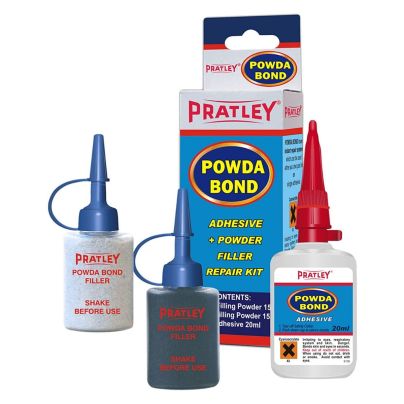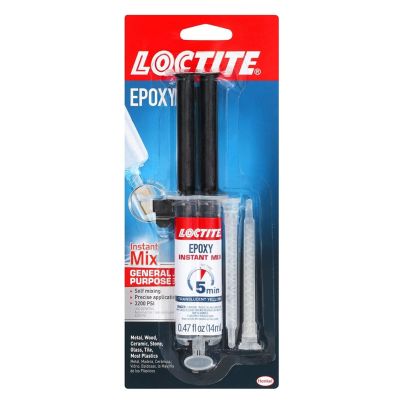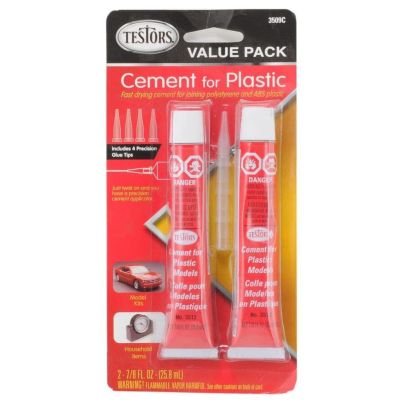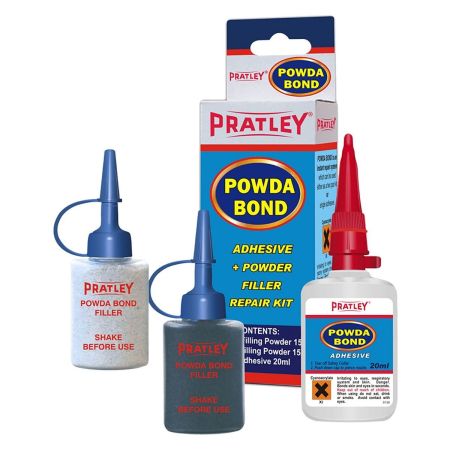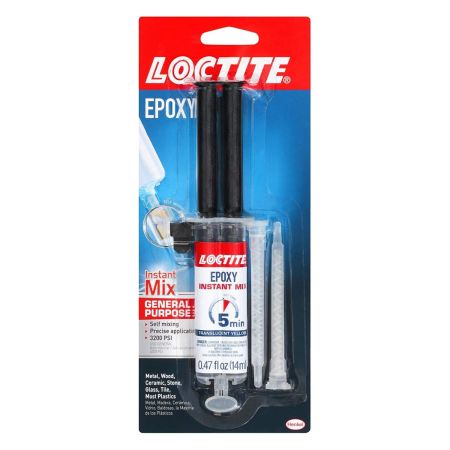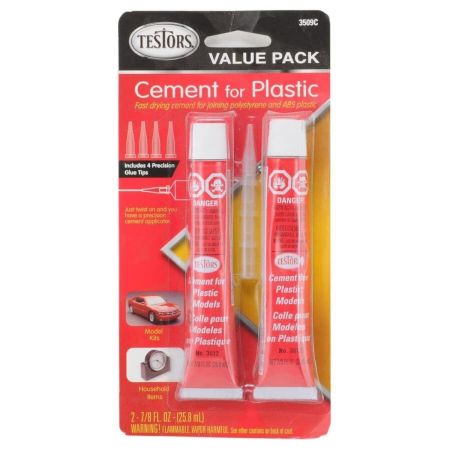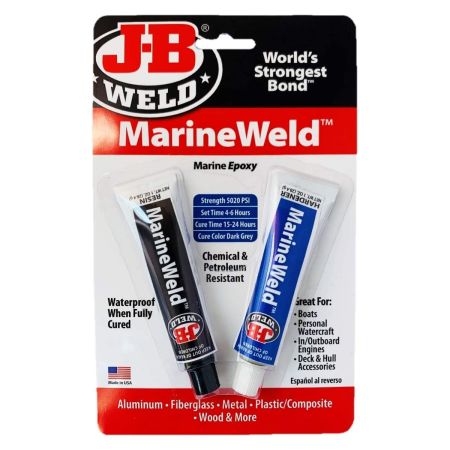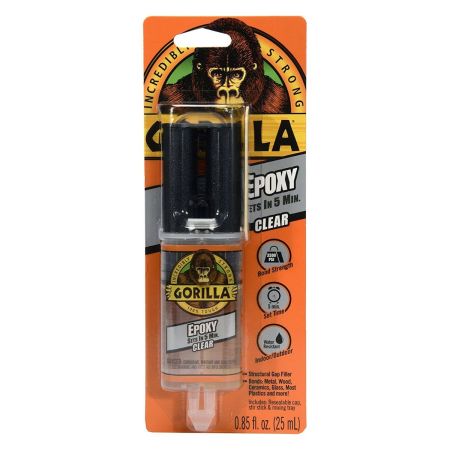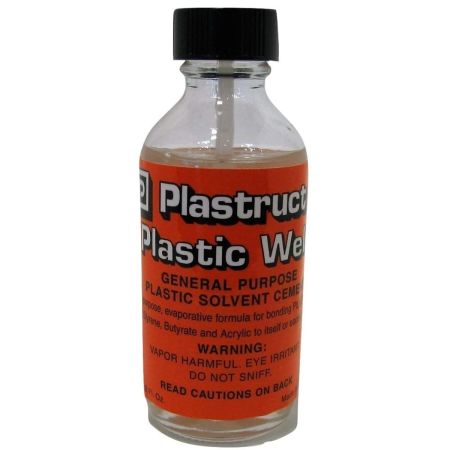We may earn revenue from the products available on this page and participate in affiliate programs. Learn More ›
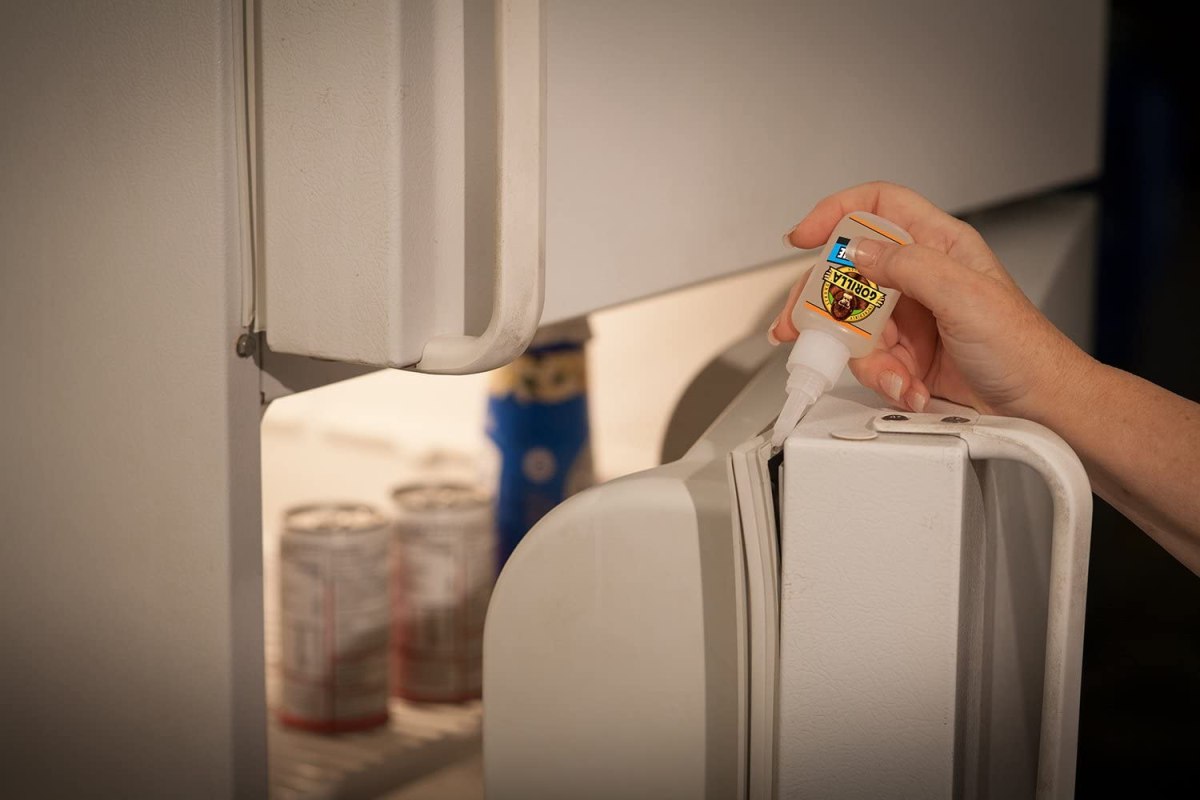
One formula definitely does not fit all when it comes to glues for your DIY projects. Adhesives are chemically designed to work with certain materials. Wood glue, for example, is great for carpentry but won’t be effective on metal. Even Super Glue—possibly your default option for just about anything—has its limits, as cyanoacrylate, which is its active ingredient, doesn’t adhere well to smooth surfaces.
Trickier still, gluing plastic depends largely on the target material. A glue that works well bonding plastic to plastic may be a poor choice to adhere plastic to metal or wood. Most DIYers maintain a collection of adhesives to get the job done right the first time. So don’t get stuck using the wrong product. Read on to better understand the properties of the glues on the market and why the choices below rate as the best for all your plastic bonding needs.
- BEST OVERALL: Pratley Powda Bond Adhesive
- BEST BANG FOR THE BUCK: Loctite Epoxy Five-Minute Instant Mix
- BEST FOR PLASTIC TO PLASTIC: Testor Corp Cement Glue
- BEST FOR PLASTIC TO METAL: J-B Weld 8272 MarineWeld Marine Epoxy
- BEST FOR PLASTIC TO WOOD: Gorilla 2 Part Epoxy
- BEST FOR ABS PLASTIC: Plastruct Plastic Weld
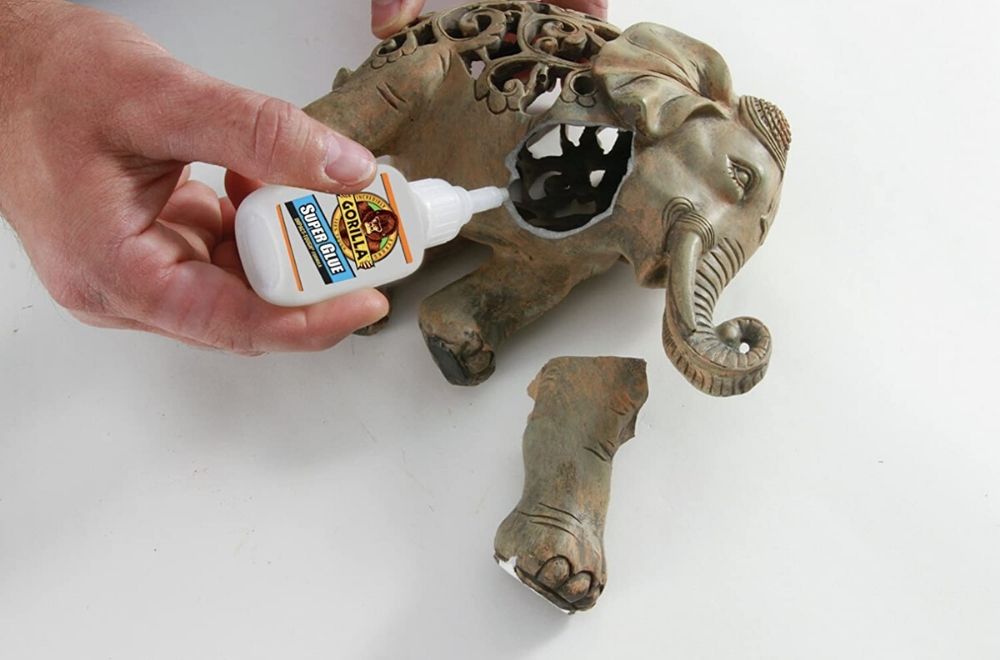
Types of Glue for Plastic
Strong glues designed for plastic come in several different types, including cyanoacrylate (Super Glue), model cement, epoxy, and multi-purpose.
Cyanoacrylate
While some adhesives rely on evaporation to form a bond between two objects, cyanoacrylate (commonly known as Super Glue) uses anionic polymerization to form a chemical bond when it comes in contact with hydroxyl ions in water.
This essentially means that Super Glue only requires water to bond to a substance. Since almost any surface has at least some moisture on it from humidity in the air, Super Glue can form a strong bond between virtually all surfaces. The one exception is hard, smooth plastics; for optimum results in projects like automotive body repairs, use sandpaper to scuff smooth plastic before applying Super Glue. Also, keep in mind that cyanoacrylate can discolor or degrade acrylics, so it wouldn’t be ideal for gluing plexiglass windows for example
Model Cement
Model cement relies on solvents like butanone, toluene, or dichloromethane (DCM) to melt plastic on application and a filler, such as polystyrene, to then weld the plastics together. This method of joining materials makes model cement only effective on plastic. It cannot be used with metal, wood, ceramic, stone, or concrete. As the name implies, this adhesive is commonly used for joining plastic components while building models; it’s also used to connect ABS pipe together and in plumbing with PVC pipe.
Epoxy
Epoxy normally comes in two tubes with separate or connected plungers, depending on the brand. One tube is filled with a resin, the other with a hardener. When the two are pushed out of the tubes onto a surface and combine, they create a very strong, durable, and water-resistant adhesive. Epoxies are best for metal, ceramics, rubber, wood, and certain plastics.
While some epoxies form an incredibly strong bond in only five minutes, others can require more than two hours of clamping, 12 hours of drying time, and one to two days until they are fully cured. When used properly, epoxies are extremely versatile and can be seen in many industries, including electronics, medical devices, and aerospace; DIYers rely on waterproof epoxies for boat and dock repairs.
Multi-Purpose
Multi-purpose glues—including carpenter’s glue, white glue, school glue, and wood glue—are intended for porous materials like wood, paper, cloth, pottery, and non-structural wood bonds. They aren’t effective for non-porous materials like plastic and metal because polyvinyl acetate (PVA), the active ingredient, relies on evaporation and a porous surface to form a bond between two objects. Though great for everyday use, multi-purpose glues may require clamping in place for up to an hour so water can evaporate from the glue, leaving the polyvinyl acetate behind to form a bond. Full curing takes between 18-24 hours.
Our Top Picks
The top-rated products below were chosen for quality, price, and customer satisfaction to help you find the best glue for all your plastic projects.
Best Overall
Pratley Powda Bond Adhesive
See ItThe Pratley Powda Bond Adhesive uses a combination of filling powder, which is a wood aggregate, and heavy-duty cyanoacrylate, or Super Glue, to form a powerful bond that can be sanded, filed, drilled, tapped, and painted without losing its structural integrity. As the best Super Glue for plastic, it bonds to plastics, including ABS, PVC, and polystyrene, as well as resin, fiberglass, metals, rubber, ceramic, and concrete glass within one minute of all liquid being absorbed.
The included filling powder is used for repairing holes or gaps between objects, as when a piece of the object is missing. Among the strongest glue for plastic, the combination product is placed into the hole or carefully applied in a gap to create a solid adhesive bond that also fills the gap or hole. The powder comes in black or white but can be mixed for a metallic gray appearance. As filler, this adhesive can be used on automotive parts, electrical switches, remotes, tools, pool pump valves, and many other applications. If you don’t need the powder for filling, the heavy-duty cyanoacrylate works as a powerful adhesive on its own.
Product Specs
- Type: Combination Super Glue and powder
- Compatible Materials: ABS, PVC, polystyrene, resin, fiberglass, metals, rubber, ceramic, and concrete glass
- Volume: 20 milliliters
- Curing Time: Not specified
Pros
- Powerful Super Glue adhesive
- Includes filling powder for repairing holes or gaps
- Can be used on automotive parts, electrical switches, remotes, tools, and pool pump valves
Cons
- Some users may not need the included filling powder
- Unknown curing time
Get the Pratley Powda glue kit on Amazon.
Best Band For The Buck
Loctite Epoxy Five-Minute Instant Mix
See ItLoctite Epoxy Five-Minute Instant Mix works on metal, glass, ceramic, wood, many rigid plastics, china, tile, fiberglass, concrete, and stone. This value adhesive performs as well as higher-priced products for a wide range of projects, such as gap bonding, surface repairs, and laminating. The strong glue for plastic is easy to use, thanks to a self-mixing syringe and the push of a single, connected plunger to combine resin and hardener before application.
Once mixed, resin and hardener set within five minutes, so be sure to apply it immediately. The result is a high-strength bond that is weather-, water-, and solvent-resistant. After 24 hours to fully cure, the epoxy can be painted and sanded without losing tensile strength.
Product Specs
- Type: Epoxy
- Compatible Materials: Metal, glass, ceramic, wood, plastic, china, tile, fiberglass, concrete, and stone
- Volume: 13.9 milliliters
- Curing Time: 24 hours
Pros
- Affordable adhesive
- Suitable for a wide range of projects
- Easy-to-use self-mixing syringe
- Weather-, water-, and solvent-resistant bond
- Can be painted and sanded after curing
Cons
- Must be applied immediately after mixing before resin and hardener set
Get the Loctite Epoxy glue at Amazonor at Ace Hardware.
Best Plastic To Plastic
Testor Corp Cement Glue
See ItNothing beats a quality model cement for joining ABS plastic or polystyrene plastic, and Testor Corp’s Cement Gluemakes the job even easier, thanks to multiple precision tips that ensure accurate application. Toluene melts the plastic on application and polystyrene welds plastic objects together once the toluene reaction ends.
It sets within a minute of application but begins reacting on contact: Be sure to place pieces correctly to avoid visibly melted plastic around the glued area. Note: When gluing plastic to plastic, always use it in a well-ventilated area due to the cement’s strong chemical smell.
Product Specs
- Type: Model Cement
- Compatible Materials: ABS and polystyrene plastic
- Volume: 51.6 milliliters
- Curing Time: Not specified
Pros
- Welds plastic objects together
- Precision tips for accurate application
- Sets within 1 minute of application
Cons
- Strong chemical smell; must be used in well-ventilated area
Get the Testor Corp glue on Amazon.
Best For Plastic to Metal
J-B Weld 8272 MarineWeld Marine Epoxy
See ItThe J-B Weld waterproof glue for plastic can was designed for repairing boats, fixing dock pieces, or fastening metal hardware at the marina. Among the best adhesive for plastic and metal, it is heat resistant up to 550 degrees Fahrenheit and has a tensile strength of 5,020 PSI, which means that it would require 5,020 pounds of force to pull apart two objects fastened using this glue. It can be used with aluminum, fiberglass, metal, plastic, composite, and wood. It’s a two-tube epoxy that comes ready to mix at a ratio of 1:1.
The epoxy takes between four to six hours to set. This gives you a long period of adjustment, to ensure that the adhesive and materials are set just right, but it’s best to clamp pieces in place once you have a perfect position. The complete cure time is between 16-24 hours, and once cured, it can be tapped, filed, sanded, molded, and drilled.
Product Specs
- Type: Epoxy
- Compatible Materials: Fiberglass, plastic, metal, composite, and wood
- Volume: 59.14 milliliters
- Curing Time: 16-24 hours
Pros
- Waterproof formula
- Comes ready to mix
- 5,020 PSI tensile strength
- Heat resistant up to 550 degrees Fahrenheit
- Can be tapped, filed, sanded, molded, and drilled once cured
Cons
- Takes 4 to 6 hours to set
Get the J-B Weld glue at Amazon, Ace Hardware, and The Home Depot.
Best For Plastic to Wood
Gorilla 2 Part Epoxy
See ItGorilla 2 Part epoxy glue for plastic is useful for gap filling, repairing exterior siding, or gluing plastic, wood, metal, ceramics, brick, stone, concrete, glass, and foam. It comes in a dual-syringe form that uses a combined plunger to push the resin and hardener out through the same point.
Once mixed, the epoxy sets in five minutes, allowing you time to ensure proper placement before permanent adhesion. The epoxy is water-resistant (though not waterproof) so it can hold up fairly well when used on outdoor items. A good plastic glue, the formula takes 24 hours to fully cure to a completely clear, spotless finish.
Product Specs
- Type: Epoxy
- Compatible Materials: Plastic, wood, metal, ceramics, brick, stone, concrete, glass, and foam
- Volume: 25 milliliters
- Curing Time: 24 hours
Pros
- Can be used for gap filling and repairing exterior siding
- Water-resistant
- Clear, spotless finish
Cons
- Not waterproof
Get the Gorilla glue at Amazon, Ace Hardware, and The Home Depot.
Best For Abs Plastic
Plastruct Plastic Weld
See ItApply this plastic cement with the included brush and permanently bond ABS to butyrate, styrene, acrylic, plexiglass, and most other types of plastic. This is one of the best glues for hard plastic that acts by melting the surface of the target material and using polystyrene to polymerize the two objects into a new, bonded structure with nearly the same strength as the original material.
Plastruct’s glue for hard plastic is perfect for models, minor repairs, plastic automotive part repairs, and many other applications. Caution: The fumes from this plastic cement are flammable and hazardous to your lungs, so only use in a well-ventilated area with a respirator.
Product Specs
- Type: Model cement
- Compatible Materials: ABS, butyrate, styrene, acrylic, plexiglass, and other plastics
- Volume: 59 milliliters
- Curing Time: Not specified
Pros
- Permanently bonds plastic
- Ideal for models, minor repairs, and automotive part repairs
- Includes applicator brush
Cons
- Not water-resistant
- Must be applied with a respirator in a well-ventilated area
Get the Plastruct glue on Amazon.
Our Verdict
For a variety of plastic repair projects, we recommend the Pratley Powda Bond Adhesive, a combination Super Glue and filler powder. For an affordable weather-, water-, and solvent-resistant bond, consider the Loctite Epoxy Five-Minute Instant Mix.
How We Chose the Best Glue for Plastic
We researched the best plastic glue in a variety of categories offered by the top brands with high customer satisfaction. The top picks for bonding plastic were chosen based on type, compatible materials, curing time, quantity, and ease of application.
The list features different types of glue for plastic including Super Glue, epoxy, and model cement. We prioritized options with included applicators that cure within 24 hours. Several of the best glues to use on plastic are weather- and water-resistant. We included plastic to plastic glue and glues that bond with other materials including metal, wood, composite, stone, brick, and concrete. Each pick for the best plastic adhesive is available in volumes between 13.9 and 59.14 milliliters.
FAQs
For best results, it’s wise to fully understand how to properly use glues designed for bonding plastic. Find answers to some of the most common questions about these adhesives below:
Q: What is the difference between plastic glue and Super Glue?
Plastic glue is a broader category of glues that Super Glue (cyanoacrylate) belongs to because of its ability to bond with some plastics. Epoxies, model cement, and multi-purpose glue (polyvinyl acetate) could also be considered plastic glue.
Q: Does Gorilla Glue work on plastic?
According to the manufacturer, Gorilla Glue can work well with many types of plastics, but it’s not recommended for use with polypropylene or polyethylene plastics, or with rubber that has a high oil or plasticizer content. The company does make specific products for these materials, however.
Q: What should I do if I get plastic glue on my hands?
If you get plastic glue on your hands, soak them in warm water and massage the skin to try to remove the glue. If this fails, apply acetone (nail polish remover) to remove the glue, making sure to wash well after use and apply lotion, as acetone is drying to skin.
